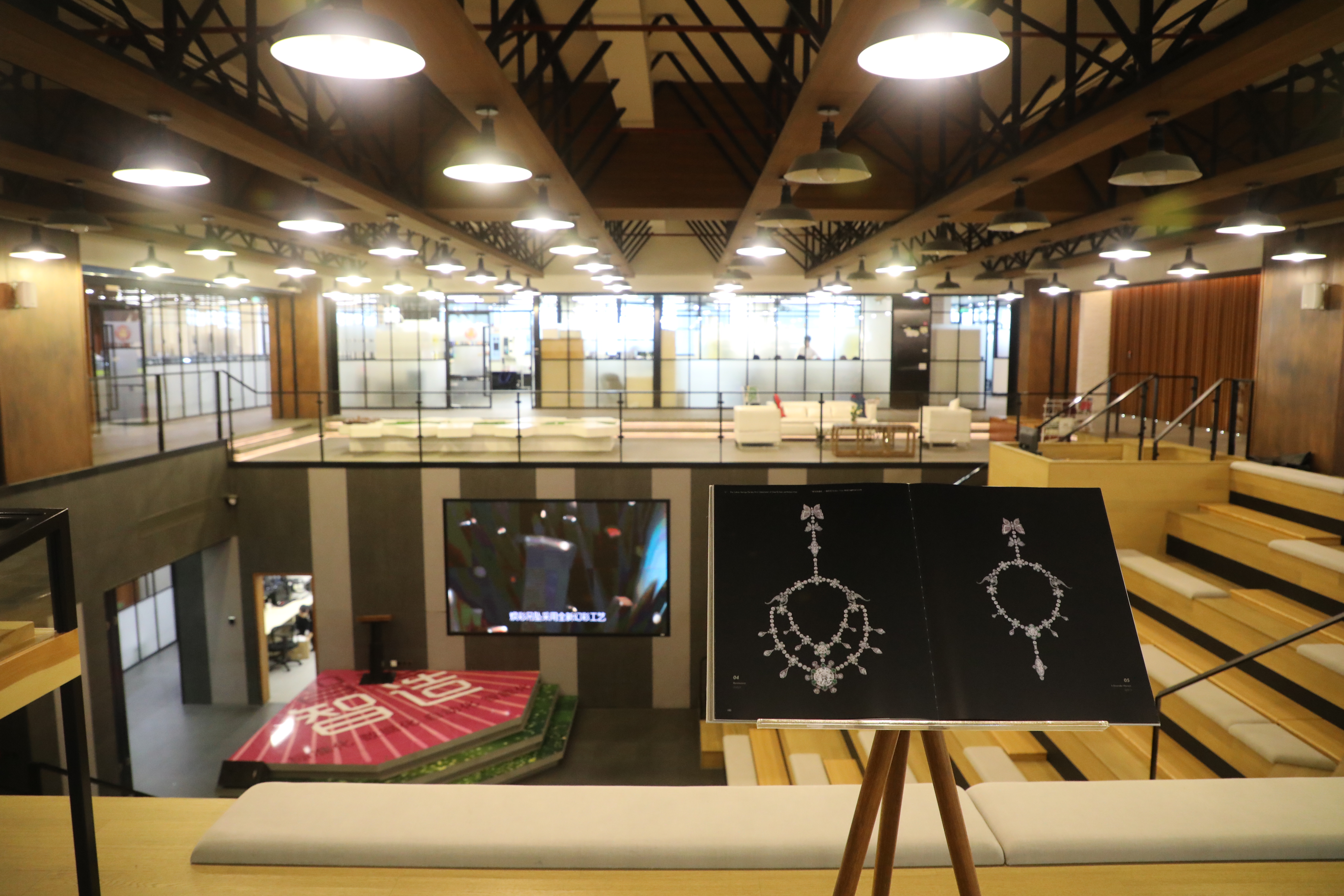
Chow Tai Fook Industrial Park in Lunjiao, Shunde District, Foshan, south China's Guangdong Province. (Xinhua/Li Jiale)
What stands out in this land reform is Shunde District in the city of Foshan, south China's Guangdong Province, which recorded a gross domestic production (GDP) of over 150 billion yuan (around 21 billion U.S. dollars) in the first half of 2019, up 7.1 percent year on year.
GUANGZHOU, Sept. 4 (Xinhua) -- Once a testing ground for China's reform and opening-up, the Pearl River Delta in south China is embracing yet another reform to make better use of rural land for higher-quality development.
What stands out in this land reform is Shunde District in the city of Foshan, south China's Guangdong Province, which recorded a gross domestic production (GDP) of over 150 billion yuan (around 21 billion U.S. dollars) in the first half of 2019, up 7.1 percent year on year.
Despite the impact brought by the Sino-U.S. trade friction, companies in Shunde still enjoyed robust growth in the first half of the year, including Midea Group, a leading home appliances maker in China, Country Garden, the country's property giant, and more.
Shunde's success should be attributed to the transformation of rural industrial parks and land rearrangement in recent years, according to experts.
At the beginning of China's reform and opening-up, almost every village in the Pearl River Delta joined the trend and developed their own industrial parks. They reaped a bumper harvest in the early period.
However, as China begins to embark on a path of higher-quality development, it is high time for the region to reform these dilapidated factories with low output and high energy consumption.
There are 19,000 companies located at 382 village-level industrial parks in Shunde, covering an area of about 9,000 hectares, or 70 percent of the district's industrial land in use. But they only made about 27 percent of the total output, and 4.3 percent of the tax contribution, according to official data.
"There is no precedent to follow in rural industrial park reform. It's a complicated problem that must balance the interests of various parties. But we have to rise to the challenge," said Guo Wenhai, Party chief of Shunde District.
To help with the transformation, a number of policies have been rolled out in recent years, such as the whole development and mixed-use of different industrial parks, land trading for industrial use, and so on.
One such example is Guangdong Nanxing Rainbow Nut Co., Ltd., whose workshop has expanded to 100,000 from 30,000 square meters after a five-phase transformation. With the modernized standard workshop, the company's output tripled to 1.5 billion yuan.
"Through upgrading, companies can expand their output and make more contribution to regional economic growth," said He Chunyun, Party chief of Longjiang Township, where Nanxing Rainbow Nut Co., Ltd. is based.
"We will establish two major industrial parks by integrating 78 village industrial parks in the town, so as to make better use of industrial land," said He.
A total of 170 upgrading projects have been launched in Shunde as of July 29. At the same time, 82 industrial parks have started their demolition process, shutting down 3,195 decrepit enterprises.
Thanks to the upgrading campaign, 39 local companies have made additional investments of over 43 billion yuan to expand production since 2018.
In a larger sense, Shunde is just one telling example of the ongoing land resource reform in the Pearl River Delta, which aims for high-quality development. The same campaign is taking place in Foshan's neighboring cities such as Guangzhou and Shenzhen.
"The transformation of rural industrial parks not only serves the purpose of higher-quality development, but also the revitalization of rural China," said Guo.



